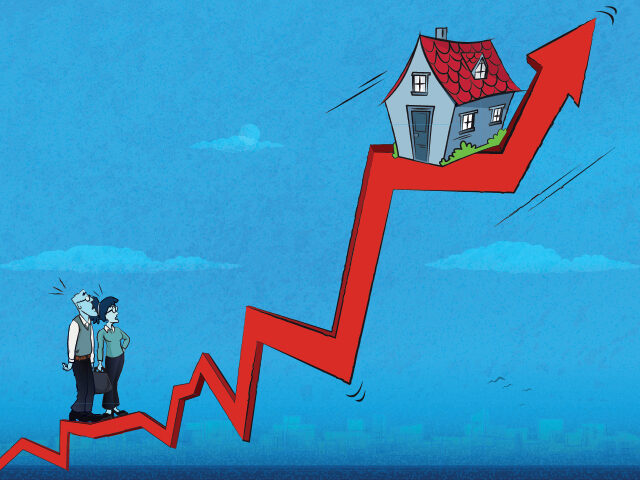The U.S. economy has decoupled from itself. The bad news is that the Federal Reserve wants to put it back together.
The housing sector is clearly in a deep recession. The National Association of Home Builders (NAHB) said on Tuesday that its barometer of homebuilder confidence fell from 46 a month ago to 38 in October. This was the tenth straight monthly decline, the longest on record, beating the eight month housing bubble losing streak in 2006 and 2007. The last time the index was this low was 2012, according to the NAHB.
“This situation is unhealthy and unsustainable. Policymakers must address this worsening housing affordability crisis,” said Jerry Konter, the head of the association and a Georgia homebuilder.
Unfortunately for the builders, it is very likely that the situation will be sustained for quite some time. The Federal Reserve is all but certain to announce another 75-basis point hike at its November meeting, and the market-implied odds now solidly favor another 75-basis point hike in December. The 30-year fixed mortgage rate is already above seven percent and will likely head north of eight percent this year.
These higher rates make homes less affordable because they raise monthly mortgage payments. The monthly payment on a house that costs $436,800 (the median sales price in August) would be around $1,760 after a 20 percent downpayment with a three percent mortgage. The same house now would require $2,636 per month. This means that many would-be first time homebuyers will simply be squeezed out of the market. Many people who would have moved—either into a bigger house to fit a growing family or into a smaller house for empty-nesters—will stay put rather than bear the higher rates. That, in turn, will keep supply low and prices high.

(iStock/Getty Images)
There’s little chance of relief from Fed hikes because no matter how unhealthy the housing market might be, the rest of the economy is still running hot. The labor market is still extremely unbalanced, with 1.7 vacant jobs for every unemployed person. The unemployment rate is just 3.5 percent, and the four-week moving average of unemployment claims is just 211,500. To put that figure in context, the average for this century is around 348,000.
It is not just the labor market. The Federal Reserve on Tuesday released figures for industrial production in September. Economists were expecting production to grow 0.1 percent after the preliminary August read showed a decline of 0.2 percent. Manufacturing was expected to grow 0.2 percent after a meager growth of 0.1 percent in the prior month. Instead, overall production rose 0.4 percent, and manufacturing was up 0.4 percent as well. The prior month’s output was revised up as well, so now overall output fell by just one percent, and manufacturing output was up by four percent. The September figure would have been even higher if Hurricane Ian had not knocked out utilities across Florida and South Carolina.
Capacity utilization rose to 80.3408 percent. That is the highest level of factory activity since the 2008 financial crisis. That level of utilization suggests there’s not much more production that can be squeezed out of this economy in the near term. That’s a recipe for more inflation. It also means that the only short-term fix for inflation is going to be demand destruction through still higher interest rates and the recession that is now inevitable.
In short, while the housing market is currently the weakest link in the economy, the Fed’s battle against inflation requires bringing the rest of the economy to a similar state. It just takes longer for sectors that are less directly dependent on interest rates.

COMMENTS
Please let us know if you're having issues with commenting.